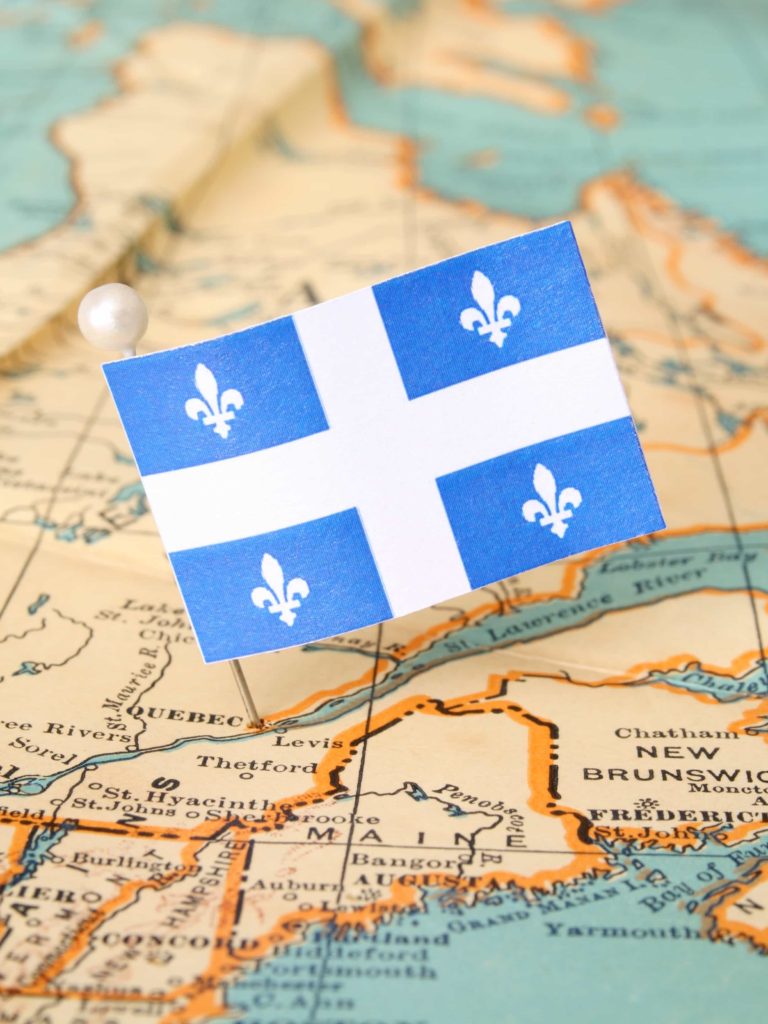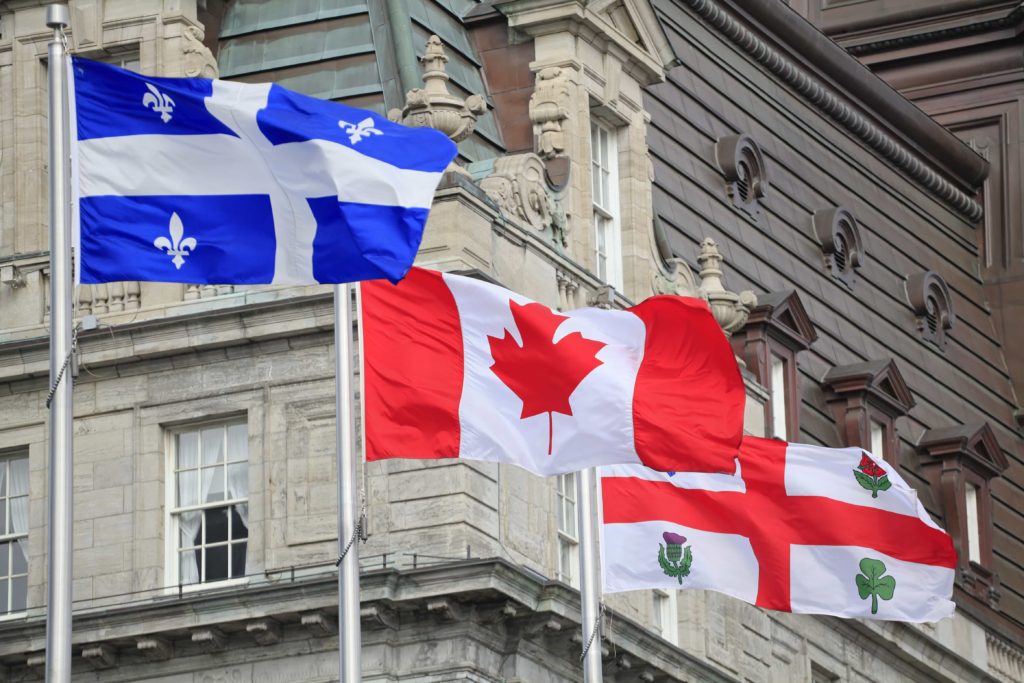
Québécois: Your Complete Guide to Understanding Canadian French
What Are the Differences Between Canadian French and European French?
Someone once asked me why I learn Canadian French? Isn’t all French just the same?
Well, that depends. You could go to Quebec just knowing European French, but what happens when someone asks you this question:
“Tsé-tu si ta blonde est prête à embarquer dans le char?”
You might be thinking, euh… Quoi?
Fear not; by the end of this article, you’ll be able to fully understand exactly what that means.
And although Quebeckers would be flattered if you spoke French during your visit, learning about Canadian French and its history is the best way to really impress (and understand) them!
The History of French in Canada
So first, let’s explore a little more about where Canadian French came from.

Explorers from provincial France discovered Canada in the mid-16th Century and founded a colony there, bringing the French language with them. British colonies appeared in North America around the same time.
France then ceded the regions of Newfoundland, Nova Scotia, and the Hudson Bay Area to Britain as part of the Treaty of Utrecht, giving way for English to become the dominant language in these regions. When Canada was formed in 1867, English was the language of government.
This left the French-speaking community surrounded by English speakers in the US and Canada and isolated from their Francophone cousins in Europe.
With a huge reduction in immigration from France, modern vocabulary no longer found its way to French-speaking Canada.
As you’ll see, this isolation is key in the history of québécois because it meant the language evolved differently than European French.
The Differences Between French in Quebec and France
There are so many ways that the two types of French are different, but it’s easiest to split them into three groups: pronunciation, grammar, and vocabulary.
Let’s have a look at some examples from each group.
Pronunciation of French in Canada
The difference in pronunciation is one of the most obvious to spot. Like the diverse accents throughout France, Quebec French has a distinct sound that gives it its identity.
Lots of French Words Become Shorter in Canadian French
One key difference in Canadian French is contractions: words are shortened, merged, or sometimes just disappear altogether in spoken québécois.
So if you hear tsé, the speaker actually means tu sais. S’a replaces sur la, and believe it or not, chu is the Canadian French form of Je suis!
Let’s see some more examples:
- Il becomes y, as in y’aime or yé/y’est (which replaces il aime and il est)
- Peut-être becomes p’t’-êt’
- Elle becomes a
- Quebeckers tend to drop the word ne from negative phrases as in many French dialects.
“Dzifferent” Sounds for Words Beginning With ‘d’ and ‘t’
Words beginning with t- and d- sound slightly different in Quebec French. When spoken, their sound is softened so that ‘t’ sounds like ‘ts’ and ‘d’ sounds like ‘dz.’
This means the phrase tu n’as rien dit sounds more like tsu as rien dzit.
It’s a minor difference, but the many small variations add up to a French that seems so far removed from the European French we learn at school!
Next up, let’s look at grammar in québécois.
Grammar Differences Canadian French vs European French

Tu and Vous Are Used Differently
Have you been religiously learning your tu and vous forms, and when to use them?
If so, we have some bad news for you… the rules are a little different in Canada.
Québécois speakers use the tu form way more often than their French counterparts. At the supermarket, in a bar… pretty much everywhere except during business conversations.
Because the line is less clear than in France, if you’re unsure, use vous to play it safe.
One important piece of advice: don’t sweat it if you make a mistake. Quebec natives understand that tu and vous are tricky topics for French learners, so they won’t be offended if you get it wrong!
The ‘Tu’ Question Particle
Here’s a question… Did you notice the extra tu in the original example?
Have another look: tsé-tu si (or tu sais-tu si without the contraction).
Did you see it? This sneaky little addition is one of the main features of French in Canada.
The extra tu doesn’t change the meaning of the question; it’s just something that French Canadians like to throw in there for good measure.
It doesn’t even change if the subject of the question changes. It’s always tu, even if you’re talking about someone else. Here’s an example:
Elle va-tu venir? (as opposed to elle va venir)
It might look unusual, but it’s exactly how native speakers use this little word. Give it a try!
Differences Between Canadian French and European French Vocabulary

Quebec French Has a Flavor of the Past
Being isolated from mainland France since the 18th Century had an interesting effect on the French in Quebec.
When society evolved and new technologies arrived around the globe, European French speakers created new words for the concepts. But French speakers in Canada either made no change or adapted the meaning of existing words to accommodate the new ideas.
Have a look at the Canadian French word for car: char. This is an antiquated French term meaning “chariot,” which differs slightly from the European French term voiture!
There’s also the verb embarquer, a remnant of the French settlers who used water transport for long journeys. In modern québécois, though, embarquer describes getting on any kind of transport, including cars and buses!
Another example is à cause que, meaning “because”. To a European French speaker who would use the modern “parce que,” it sounds quaint and old-fashioned.
For comparison, these examples are like hearing an English speaker call a portable radio a “wireless”.
Canadian French Includes Loanwords From English
“But doesn’t all French include English loanwords to some degree?” we hear you ask.
Yes, that’s true, but Anglicisms played such an important role in shaping québécois that it needs a special mention.
Being surrounded and governed by English speakers for centuries meant that the French spoken in Quebec was heavily influenced by English, with many loanwords and loan translations still in use today.
Here are just a few, with the European French equivalents in square brackets:
- La pinotte [la cacahuète] (peanut)
- Bienvenue [Je vous en prie] (you’re welcome)
- Je suis dans le trouble [J’ai des ennuis] (I’m in trouble).
- Watcher [regarder] (to watch)
- Truster [faire confiance] (to trust)
- La job [le boulot] (job)
- Un cellulaire [un portable] (cellphone)
- La fin de semaine [le week-end] (weekend)
- La blonde [la petite-ami/la copine] (girlfriend)
There are hundreds of these loanwords used every day in Quebec French.
Although it’s easier for English speakers to learn, it does create a lot of controversy for Quebeckers.
Protecting Québécois
Native Quebec French speakers were concerned about the enormous influence of English on their language for decades.
Not only did Canadian French borrow many words from English, but public services outside of Quebec province were delivered in English, giving the broader population an incentive to embrace English over French.
Quebec natives felt marginalized in favor of the Anglophone community and that their language was at risk.
This came to a head in the 1960s, during a period called the “Quiet Revolution.”
This was when the Canadian government passed the Official Languages Act, giving French communities the right to access public services in French.
Around the same time, there was another landmark development for Quebec French: the Office québécois de la langue française (OQLF) was founded.
The OQLF is probably most famous for its militant battles with Quebec’s small businesses about signage, as they file claims against organizations that give preference to English on public signs.
No one is hidden from their watchful eye, from hospitals to coffee shops!
Another way the OQLF fights the influx of English is to publish approved lists of alternative vocabulary for Anglicisms that are popular in European French to encourage people to use more traditional French words.
The words they target are usually related to slang, pop culture, or technology, as these are the most likely culprits for borrowing!
Here are some of their recommendations:
[European French equivalents in square brackets]
- Le stationnement [le parking] (parking lot)
- La gomme à mâcher [le chewing-gum] (chewing gum)
- Le courriel [l’émail] (email)
- Clavarder [chatter] (to chat online)
- Faire du magasinage [faire du shopping] (to go shopping)
The effort to protect Quebec French has led to an interesting mix of older English loanwords from before the OQLF, and the approved alternatives to modern vocabulary that are specific to Quebec.
Are the Differences Between Canadian French and European French That Great?
So, looking back at all these variations, it’s easy to see how French in Quebec is completely different from the French you might speak in France.
Let’s take another look at the phrase from the introduction, to see if it makes sense now:
“Tsé-tu si ta blonde est prête à embarquer dans le char?”
Using the features we mentioned, it should be quite easy to translate it to European French now. You should get:
“Tu sais si ta copine est prête à monter dans la voiture?”
And in English… “Do you know if your girlfriend is ready to get in the car?”
Et voilà! Now you have all you need to survive a trip to La Belle province. A bientôt!
The Pimsleur Difference
When you arrive in another country, you want to feel confident. You don’t want to worry about making faux pas with the few words you can remember. With Pimsleur, you’ll learn from native speakers, so you’ll know the right way to speak the language conversationally. You’ll feel comfortable speaking in any situation!
Why wait? Start your free trial week of Pimsleur French Premium today!
2 Comments for "Québécois: Your Complete Guide to Understanding Canadian French"
Is Pimsleur even available in Quebec? I can’t seem to be able to purchase it.
Is the Pimsleur French offered considered international French? I am currently on French level 1 premium but it seems to be tailored to European French. I want to learn québécois French.
Thank you.